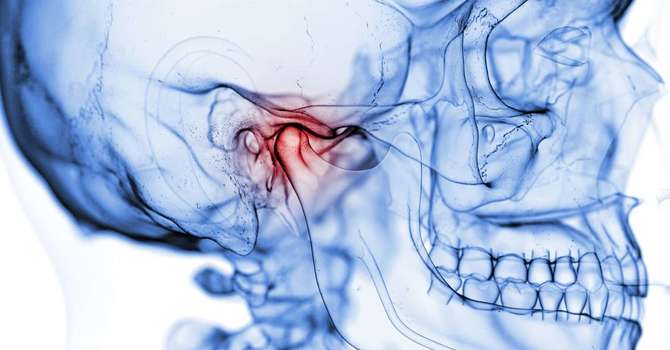
Osteoarthritis is the most common form of arthritis and affects millions of people worldwide. It occurs when the protective cartilage on the ends of the bones wears down over time. The cartilage becomes rough and eventually wears out leaving bone rubbing on bone.The most common sites are your hands, knees, hips and spine.
Symptoms of osteoarthritis are pain in the joint with movement, tenderness, stiffness, loss of flexibility and sometimes a grating sensation on movement.
Some risk factors are:
• Older age. The risk of osteoarthritis increases with age.
• Sex. Women are more likely to develop osteoarthritis, though it isn't clear why.
• Obesity. Carrying extra body weight contributes to osteoarthritis in several ways, and the more you weigh, the greater your risk. Increased weight puts added stress on weight-bearing joints, such as your hips and knees. In addition, fat tissue produces proteins that may cause harmful inflammation in and around your joints.
• Joint injuries. Injuries, such as those that occur when playing sports or from an accident, may increase the risk of osteoarthritis. Even injuries that occurred many years ago and seemingly healed can increase your risk of osteoarthritis.
• Certain occupations. If your job includes tasks that place repetitive stress on a particular joint, that joint may eventually develop osteoarthritis.
• Genetics. Some people inherit a tendency to develop osteoarthritis.
• Bone deformities. Some people are born with malformed joints or defective cartilage, which can increase the risk of osteoarthritis.
Staying active, maintaining a healthy weight and other treatments may slow progression of the disease and help improve pain and joint function.
Below are some tips to preventing and slowing the progression of Osteoarthritis and how different therapies at the clinic can help.
Exercise.
Exercise is one of the most effective non drug methods of decreasing pain and increasing function in osteoarthritis. It also aids in weight reduction.
Exercise can include gentle stretching, strengthening with light weights and aerobic activity. Current guidelines are that you should do 150 mins a week of moderate intensity aerobic activity per week.
Weight bearing exercises such as walking can improve the function of the cartilage making it more spongy and slowing down wear and tear. Swimming and cycling are great aerobic exercises that do not place stain on arthritic joints. Nordic walking using poles not only helps with balance but you use 90% of your muscles versus only 60% with regular walking. Using poles also helps decrease stain on an arthritic knee or foot.
Physiotherapy
A physiotherapist will assess your mobility and joint function and come up with an exercise program that is safe for you to do on a regular basis that fits your needs and lifestyle. This will include stretching and strengthening exercises that are specific to the joints involved and advise re safe aerobic activity.
Physiotherapists also use manual therapy techniques to regain joint mobility and modalities such as ultrasound and laser can help reduce localized pain and inflammation.
Osteopathy
An osteopath will also assess you to ensure all joints are moving well and use manual techniques to improve mobility.
If you come in with OA of the knee an osteopath will most likely assess your back, hip and ankle as well as your knee to ensure the entire lower quadrant moves well.
A stiff ankle, hip, or an asymmetrical pelvis can also put more strain on the knee causing more strain and degenerative changes.
If you have had abdominal surgery then scarring if this area may cause your pelvis and hip to have limited mobility, thus again putting strain on the knee.
If you have arthritis in any joints then seeing an osteopath before you start to exercise can be helpful to avoid stressing stiff joints.
Acupuncture
The World Health Organization recommends acupuncture for osteoarthritis. From a modern medical perspective, the insertion of very fine needles around the joints and elsewhere on the body can increase circulation of blood and other body fluids (especially synovial fluid in the joints) which can help to eliminate inflammation and promote healing. Stimulation of nerves that carry pain signals can also help alleviate that pain. From a Traditional Chinese Medicine (TCM) perspective, all pain and disease stems from a blockage of energy, or “qi” (pronounced “chee”) and blood, and acupuncture helps stimulate healthy and balanced circulation of both. Acupuncture can also be very helpful in combination with other therapies, sometimes boosting the effectiveness of medications, and/or reducing the need to take high levels of painkillers, as well as increasing the relief felt from exercise, physiotherapy, and other body work such as massage or osteopathy.
Massage Therapy
A massage therapist will also assess the affected joint(s) checking for range of motion along with pain and discomfort. Depending on the stage of OA treatment techniques and goals vary. The main goals include reducing pain,stiffness,edema,spasms and inflammation, while trying to increase range of motion. In the later stage maintenance of tissue health is important.
Techniques involved are fascial, general swedish techniques, passive stretching, joint play and hydrotherapy , Massage therapy can help to strip adhesions out of physiologically shortened muscles, thereby allowing those muscles to achieve their full length. As a result the muscles are less likely to pull at arthritic joints and cause unnecessary stress at that structure.
Simple self care can involve deep moist heat for the chronic stage or cold for acute inflammation. Treatment will also involve the surrounding muscles and joints to give the most relief and maintain mobility.
Diet, supplements and weight loss
Loss weight if you are overweight as this will decrease stress on arthritic joints. There is much written on diets that may help with pain and inflammation.
https://www.drweil.com/health-wellness/body-mind-spirit/bone-joint/osteoarthritis/
Turmeric, ginger and foods rich in omega-3 fatty acids such as walnuts, ground flax seeds and oily fish have been shown to decrease inflammation. Foods rich in antioxidants as found in fruits and vegetables can also help.
For more information on diet and supplements we recommend that you consult a naturopathic doctor or a dietitian.



